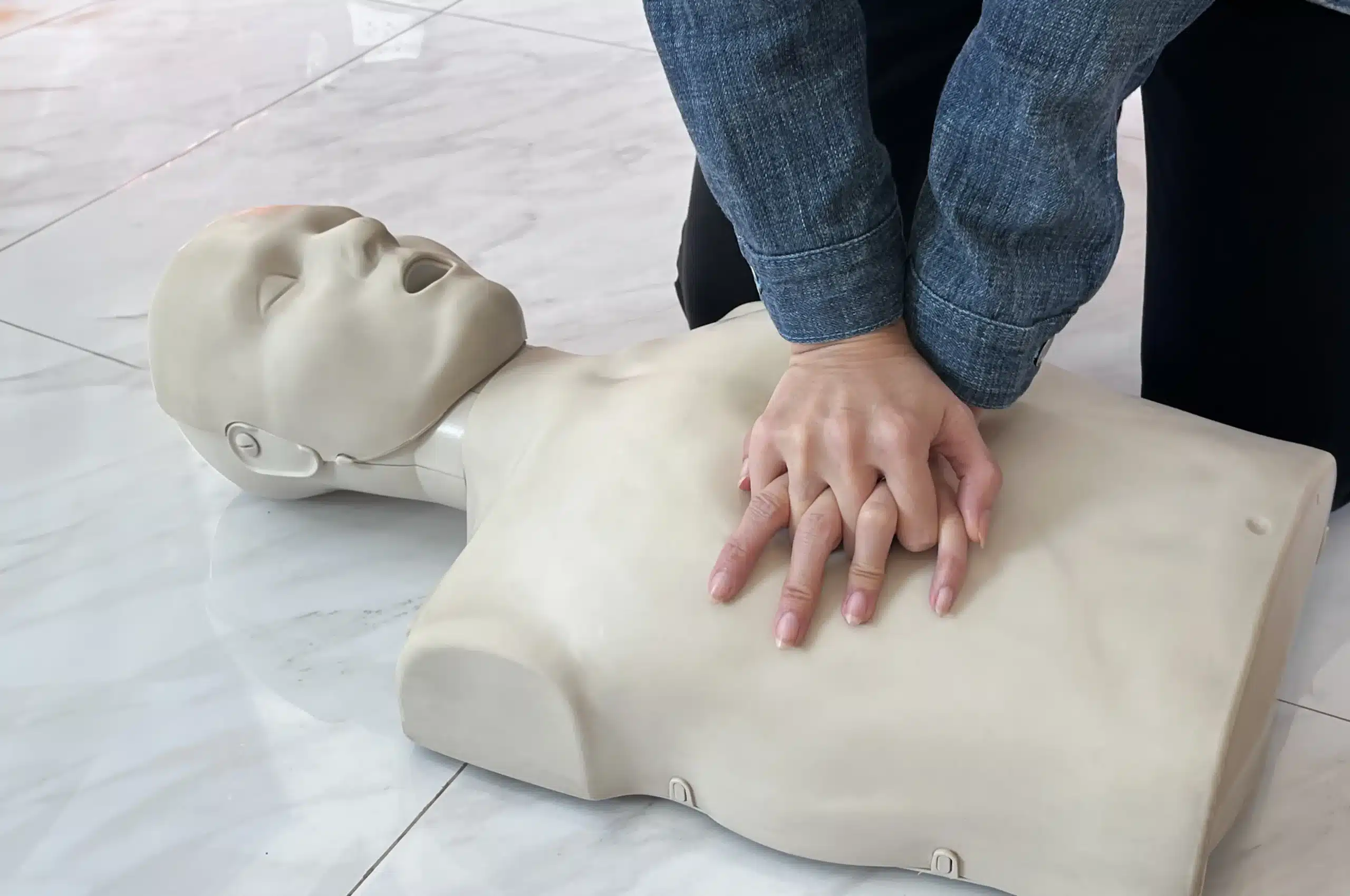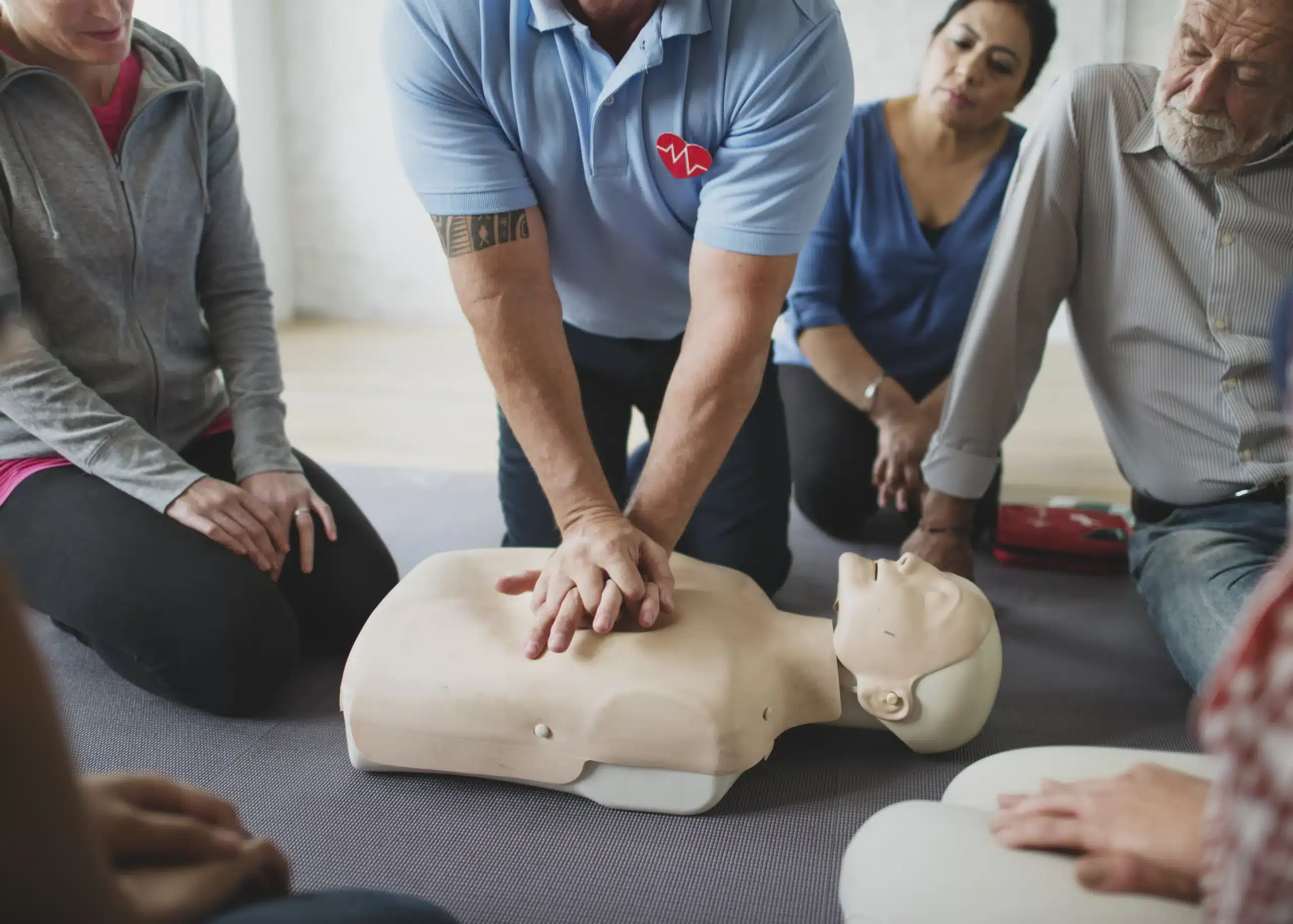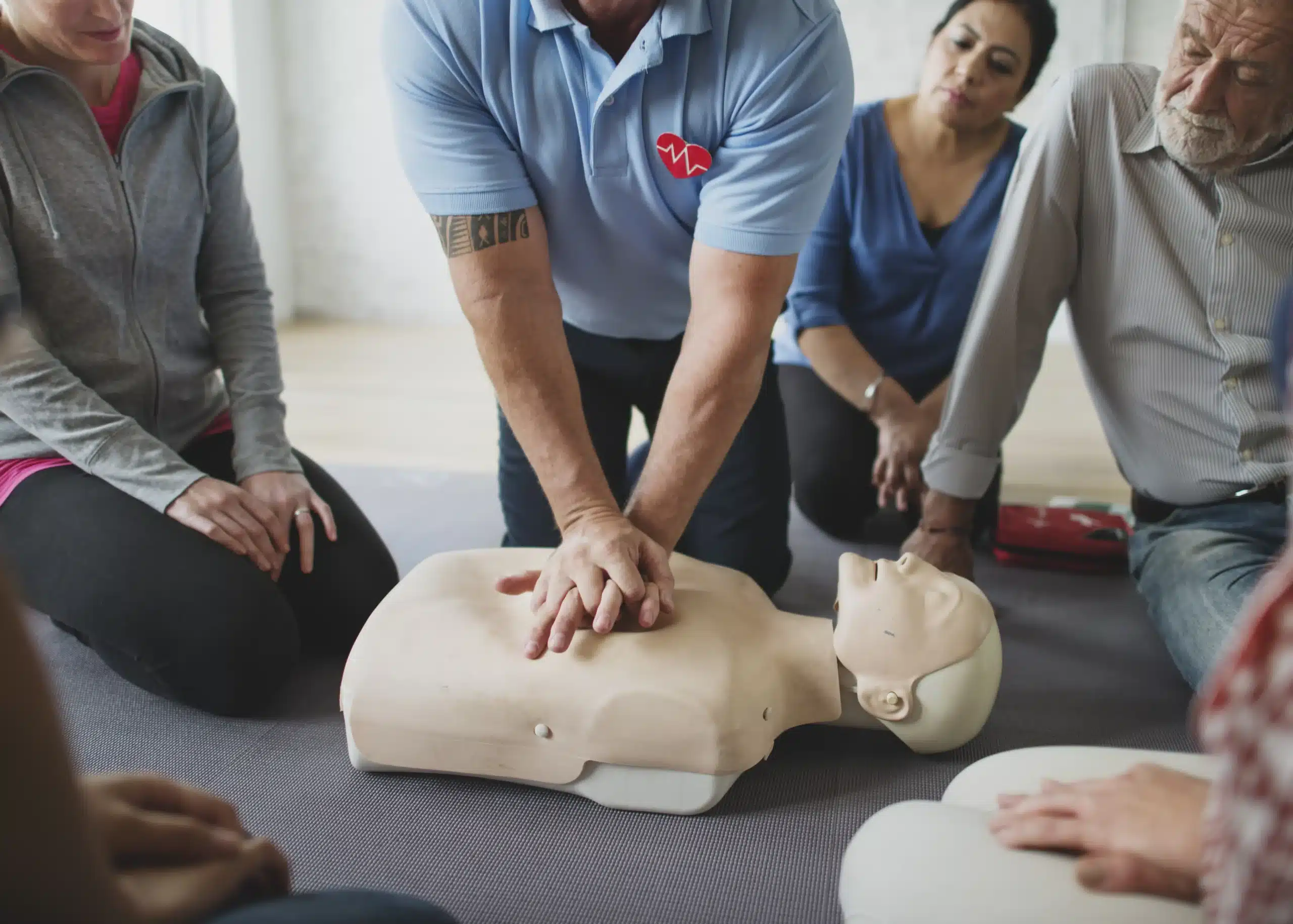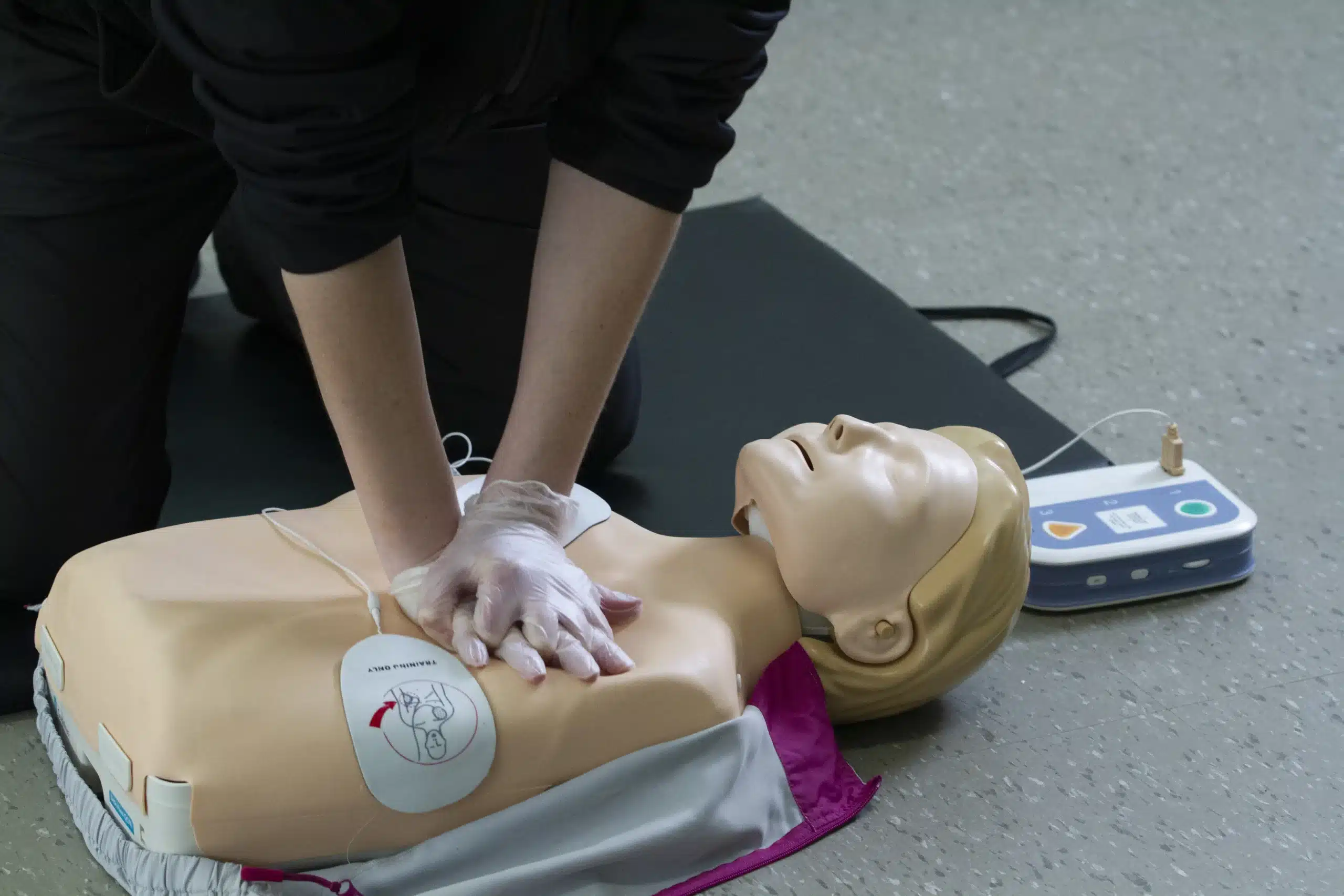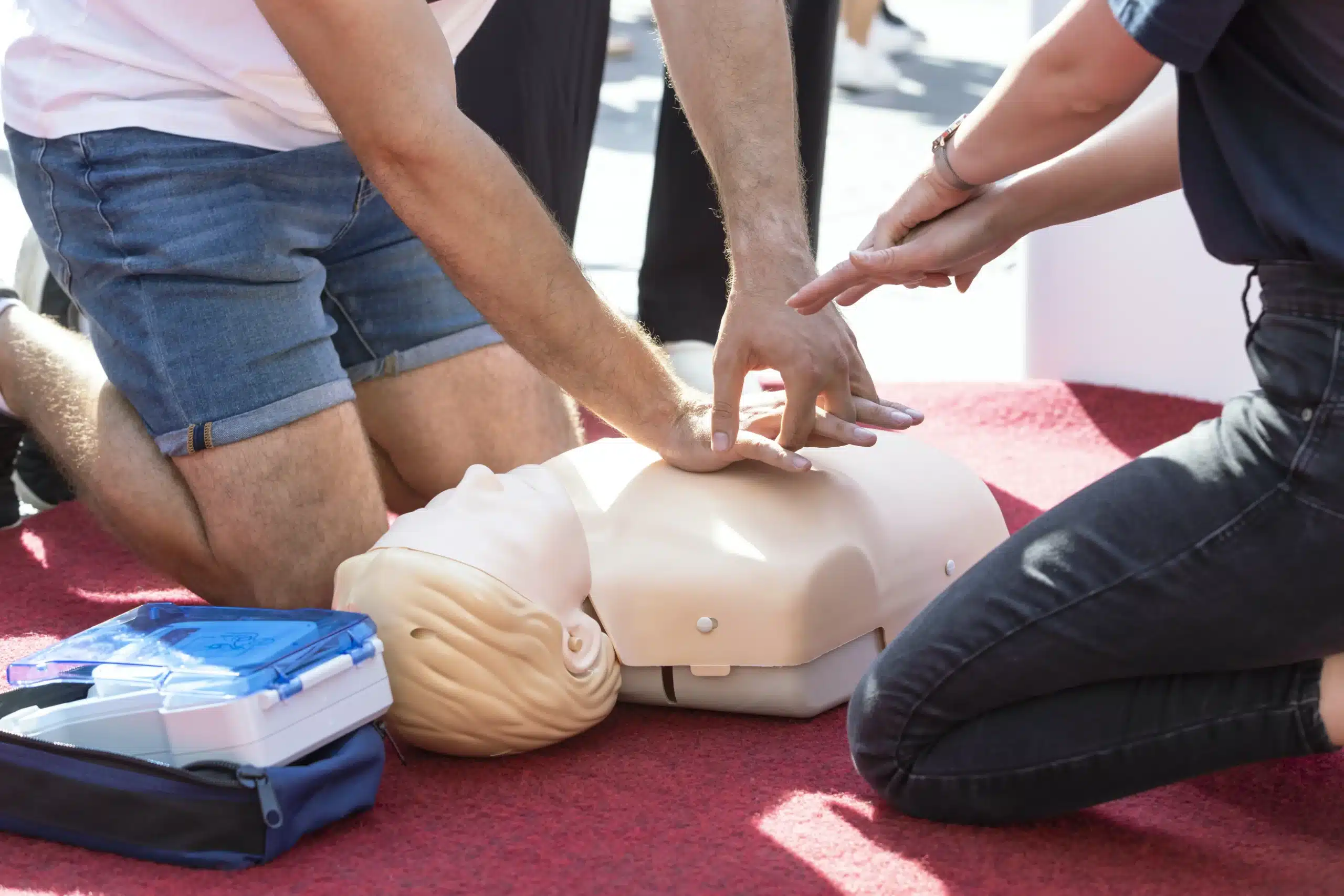BLS certification is a powerful tool, especially in a vibrant community like San Jose. Whether you’re pursuing a career in healthcare, working with children, or simply want to be prepared for any situation, BLS training provides essential life-saving skills. This guide simplifies your search for BLS classes in San Jose. We’ll break down the different types of courses available, discuss the costs involved, and highlight reputable training centers in the area. We’ll also explore the specific skills you’ll learn, the importance of BLS across various professions, and how to maintain your certification once you’ve earned it. Let’s get you started on your path to becoming BLS certified.
Key Takeaways
- BLS certification provides essential life-saving skills: Learn CPR, AED use, and airway management techniques to confidently respond to medical emergencies and improve survival rates. Explore various course formats to find one that suits your schedule and learning preferences.
- Choosing the right BLS class involves several factors: Consider the provider’s reputation, course content, available resources, and cost. Campbell CPR Classes offers a Low Price Guarantee and flexible scheduling options. Compare providers and ask about group discounts if applicable.
- Maintaining your BLS skills requires ongoing effort: Certification typically lasts two years. Stay prepared by taking renewal courses and pursuing continuing education opportunities. Regularly practice your skills to maintain proficiency and confidence in emergency situations.
What is BLS?
BLS Definition and Importance
Basic Life Support (BLS) is a crucial certification for healthcare providers, first responders, and anyone in a position to provide immediate care during a medical emergency. Think doctors, nurses, paramedics, firefighters—anyone working in healthcare. BLS covers the fundamental life-saving skills needed to respond to cardiac arrest and other life-threatening situations. It emphasizes early intervention, providing the tools to recognize and address respiratory distress, choking, and cardiac emergencies. The goal? Maintain a patient’s airway, breathing, and circulation until more advanced medical help arrives. This immediate response can significantly improve someone’s chances of survival. If you’re considering a healthcare career, BLS certification is often required. Even outside of professional healthcare, having this training can empower you to act confidently and effectively in a crisis.
Skills You’ll Learn in BLS Training
BLS training provides a comprehensive learning experience, focusing on practical skills and critical thinking. You’ll learn how to perform high-quality CPR for adults, children, and infants—a skill that can dramatically improve survival rates. The training also covers using an automated external defibrillator (AED), a device that can restore a normal heart rhythm during sudden cardiac arrest. Beyond CPR and AED use, BLS certification courses teach you how to relieve airway obstructions in both conscious and unconscious individuals. You’ll practice these skills through realistic simulations, building your confidence and preparing you to respond effectively under pressure. BLS training also emphasizes teamwork and communication—essential for successful emergency response. These skills are valuable not only in medical settings, but also in various other environments, from schools and workplaces to community centers and even at home. Knowing BLS can make you a valuable asset in any emergency. Organizations like the American Red Cross and the American Heart Association offer BLS certification, and courses typically involve online learning and in-person skills practice.
Where to Find BLS Classes in San Jose
Finding the right BLS class can feel overwhelming, but several reputable organizations and training centers offer courses in San Jose. Here are a few places to start your search:
Campbell CPR Classes
Campbell CPR Classes offers various American Heart Association certification courses, including BLS, ACLS, PALS, and First Aid. They pride themselves on excellent customer service and offer the lowest prices in Santa Clara County, backed by a Low Price Guarantee. Conveniently located in Campbell, they serve San Jose, Campbell, and Cupertino. Check out their BLS course for more information. For businesses or organizations, they also offer discounted group rates.
American Red Cross
The American Red Cross is a well-known provider of BLS certification and recertification courses. Their classes cover essential life-saving skills such as CPR, AED use, and airway management. You can find a BLS class near you on their website.
American Heart Association
The American Heart Association offers a range of BLS courses designed for healthcare providers and other professionals. They provide comprehensive training that meets the latest resuscitation guidelines. Visit the AHA website to locate BLS classes in San Jose.
CPR Training Center
CPR Training Center offers various CPR and first aid certification courses, including BLS. They often provide flexible scheduling options to accommodate busy schedules. Learn more about their BLS training on their website.
Local Hospitals and Medical Centers
Many hospitals and medical centers in San Jose offer BLS certification courses, often geared towards their staff but sometimes open to the public. Check with hospitals like Good Samaritan Hospital, Regional Medical Center of San Jose, or O’Connor Hospital to see if they offer BLS training. You can also explore options at Lifework, which provides various healthcare certifications.
BLS Class Formats and Durations
Finding the right BLS class format is key to successfully completing your training. Luckily, there are several options available to fit your schedule and learning style. Let’s break down the most common formats:
In-Person Classes
In-person BLS classes provide hands-on training and direct interaction with instructors. These classes are ideal for those who learn best in a traditional classroom setting and value real-time feedback. In-person training emphasizes practical skills like CPR, AED use, and airway management through realistic emergency scenarios. Campbell CPR Classes offers in-person BLS training designed to give you the confidence to respond effectively in critical situations. These courses cover essential life-saving techniques for adults, children, and infants.
Online Options
For those with busy schedules or limited access to in-person classes, online BLS certification courses offer a convenient alternative. These courses typically involve self-paced modules, videos, and online assessments. However, it’s important to note that while fully online options may offer flexibility, they are generally not accepted by hospitals and many healthcare employers. If you plan to work in a clinical setting, an in-person or blended learning format is usually required. CPR Training Center offers more information on BLS certification options.
Blended Learning
Blended learning combines the convenience of online learning with the benefits of in-person instruction. This format allows you to complete the theoretical coursework online at your own pace, then attend a shorter in-person session to practice your skills and complete a skills assessment. This approach offers a good balance of flexibility and hands-on learning. The Red Cross is one organization that offers this blended learning approach for BLS certification.
Customizable Group Training
If you’re looking to train a group of employees or colleagues, customizable group training is an excellent option. Providers like Campbell CPR Classes offer discounted group rates and can tailor the training to your organization’s specific needs and schedule. This allows for consistent training across your team and can be more cost-effective than individual registrations. Contact Campbell CPR Classes to discuss your group training requirements.
BLS Class Costs in San Jose
Knowing the price range for BLS classes helps you budget and find the best value. This section breaks down typical costs, discounts, and special offers in San Jose.
Average Price Range
In San Jose, the average cost for an American Heart Association BLS Provider class is around $70. This usually covers the 3.5-hour course, training materials, and certification. Remember that prices can vary based on the training center and any included extras.
Group Discounts and Promotions
If you’re training with a group, look for group discounts. Many training centers offer reduced rates for groups, making it more affordable to certify your team, colleagues, or even a group of friends. This can be a smart way to save money while learning together.
Campbell CPR Classes’ Low Price Guarantee
Campbell CPR Classes offers a Low Price Guarantee for their BLS courses in Santa Clara County. This commitment to affordability ensures you receive high-quality training without overspending. Check their website for details and current pricing.
Compare Provider Costs
Before committing to a class, compare prices from different providers. Safety Training Seminars and Campbell CPR Classes are good places to start. Consider factors like location, schedule flexibility, and included materials when making your decision. A little research can go a long way in finding the right BLS class at the right price.
What Happens in a BLS Class?
Curious about what goes on in a BLS class? It’s a dynamic mix of learning and hands-on practice designed to equip you with the skills to respond confidently in emergencies. Here’s a glimpse of what you can expect:
Course Curriculum
BLS classes cover essential life-saving techniques. You’ll learn how to perform CPR on adults, children, and infants, including how to use an AED. The curriculum also covers recognizing and responding to life-threatening emergencies like heart attacks and strokes. Airway management techniques, such as relieving choking, are also key components of the training. Many courses, like those offered at Campbell CPR Classes, follow the American Heart Association guidelines.
Hands-On Practice
BLS isn’t just about lectures and textbooks. A significant portion of the class involves hands-on practice. You’ll work with mannequins to simulate real-life emergency scenarios, giving you the chance to apply the techniques you’ve learned in a safe and controlled environment. This practical experience builds your muscle memory and confidence, preparing you to act quickly and effectively under pressure.
Assessment and Certification
To earn your BLS certification, you’ll need to demonstrate your knowledge and skills. This typically involves a written exam and a hands-on skills test. You’ll perform CPR and other techniques on a mannequin while an instructor evaluates your performance. At Campbell CPR Classes, you’ll receive your American Heart Association BLS certification the same day if you successfully complete these assessments.
Certification Validity and Renewal
Your BLS certification is typically valid for two years. As your certification nears its expiration date, you’ll need to take a renewal course to stay current. This ensures your skills remain sharp and you’re up-to-date on any changes in guidelines or best practices.
Choose the Right BLS Class
Finding the right BLS class means considering a few things to make sure it fits your needs and learning style. Let’s break down the key points to help you make the best choice.
Consider Your Schedule and Learning Style
BLS classes accommodate various schedules and learning styles. Think about what works for you. Do you prefer a traditional in-person classroom, or would a blended learning approach with online modules and in-person skills sessions be more convenient? Some providers, like Campbell CPR Classes, offer various formats, including customizable group training for organizations. Consider the time commitment for each format. A traditional in-person BLS course typically takes around 3.5 hours, while blended learning options may offer more flexibility. For busy professionals or those with unpredictable schedules, the flexibility of online modules combined with a shorter in-person skills session can be a great option.
Evaluate Provider Reputation and Accreditation
Choosing a reputable and accredited provider is essential for high-quality training. Look for providers affiliated with recognized organizations like the American Heart Association or the American Red Cross. These organizations have standards and curricula for comprehensive training. Check reviews and testimonials to understand the provider’s reputation and instruction quality. Campbell CPR Classes, for example, is a woman-owned AHA Training Center known for its commitment to excellent customer service and competitive pricing, backed by a Low Price Guarantee.
Assess Course Materials and Resources
Before registering, ask about the course materials and resources. Will you receive a student manual or access online resources? Some providers offer digital materials, while others might require a physical textbook. Also, find out about the certification process. You’ll typically need to pass a written exam and a hands-on skills test to receive your BLS Provider card. Consider programs like the American Heart Association’s RQI program, offered by Campbell CPR Classes, which provides a streamlined and efficient path to certification, especially beneficial for healthcare professionals needing to maintain their credentials. Understanding the materials, resources, and certification process will help you prepare and ensure you get the most from your training.
Register for a BLS Class
Getting signed up for a BLS class is easier than you might think. With various registration options and flexible scheduling, you can find a class that fits your needs and lifestyle. Let’s break down the process.
Online Registration
Many providers, including Campbell CPR Classes, offer online registration for their BLS courses. This convenient option lets you browse available dates, select a time that works for you, and complete the registration process from the comfort of your home. You’ll typically receive instant confirmation and any necessary pre-course information via email.
Flexible Scheduling
BLS classes are designed to accommodate busy schedules. Providers understand that healthcare professionals, parents, and other individuals interested in BLS certification often juggle multiple commitments. Look for courses offered on evenings and weekends at Campbell CPR Classes, or explore blended learning options that combine online coursework with shorter in-person skill sessions.
Required Materials and Preparation
Some BLS courses require a provider manual. Check with your chosen provider to see if this applies to your class. Often, you can choose between an eBook or a physical copy. Reviewing the manual before class can help you familiarize yourself with the core concepts and prepare for the hands-on training. For example, some providers allow you to purchase an eBook to study beforehand. This pre-course preparation can make the in-class learning experience more efficient and effective.
BLS Training: Skills and Knowledge Gained
BLS training gives you the skills and confidence to respond effectively in medical emergencies. It goes beyond basic CPR to equip you with comprehensive knowledge and techniques. Here’s a closer look at what you’ll gain:
CPR Techniques for All Ages
BLS certification covers CPR techniques for everyone from infants to adults. You’ll learn the appropriate chest compression depth and rate for each age group, along with how to deliver rescue breaths safely and effectively. This training emphasizes real-life emergency scenarios, so you’ll be prepared to act quickly and confidently. For more information, check out our BLS certification course.
AED Use and Importance
Automated External Defibrillators (AEDs) can significantly increase the chances of survival during cardiac arrest. BLS training includes how to use an AED, covering everything from recognizing when it’s appropriate to correctly placing the pads and following the device’s prompts. This hands-on practice builds your confidence and prepares you to use this life-saving technology. The Red Cross offers more information on AED training.
Airway Management and Choking Response
Knowing how to manage a person’s airway and respond to choking is crucial in many emergency situations. BLS training teaches you how to clear an obstructed airway and perform rescue breathing techniques. You’ll learn how to recognize the signs of choking in different age groups and practice the appropriate maneuvers. For additional details, review the differences between BLS and CPR certification.
Recognize Life-Threatening Emergencies
BLS training isn’t just about learning techniques; it’s also about recognizing when those techniques are needed. You’ll learn to identify the signs and symptoms of various life-threatening emergencies, such as heart attacks, strokes, and respiratory distress. This knowledge empowers you to quickly assess a situation, determine the appropriate course of action, and provide assistance. Contact us with any questions.
Maintain Your BLS Certification
Once you’ve earned your BLS certification, staying current is key. Knowing what to expect helps you plan and maintain those life-saving skills.
Renewal Requirements and Process
BLS certification is typically valid for two years. As your expiration date approaches, you’ll need to take a renewal course. Check with your certifying organization, such as the American Heart Association or the Red Cross, for specific requirements. They offer resources and class schedules to help you find a renewal course that fits your needs. Don’t let your certification lapse—stay prepared!
Continuing Education
Even if your certification isn’t due for renewal, consider taking advantage of continuing education opportunities. The American Heart Association offers a range of CPR courses, which can help you refresh your skills and stay up-to-date on the latest guidelines.
Keep Your Skills Current
Regular practice is essential for maintaining proficiency in BLS. Look for opportunities to practice your skills, whether through refresher courses like those offered by the Red Cross, online resources, or even practicing with friends or family. Campbell CPR Classes also incorporates AED training into its BLS CPR classes, ensuring you’re prepared for real-world emergencies. Confident and consistent practice is the best way to ensure you’re ready to act when it matters most.
BLS Classes for Specific Professions
BLS certification is a vital skill across many professions. Whether you work directly with patients, oversee children’s safety, or lead fitness activities, having current BLS training can be crucial in an emergency.
Healthcare Providers
Healthcare providers, such as doctors, nurses, and EMTs, often require BLS certification for employment. It ensures you can deliver high-quality care in critical situations. A BLS certification course covers essential life-saving techniques, including CPR, using an AED, and airway management. These skills are crucial for responding effectively to cardiac arrest, respiratory distress, and other emergencies common in healthcare settings. Check with your employer or licensing board for specific BLS certification requirements.
Childcare Workers
BLS certification is equally important for childcare workers. Protecting the health and safety of children in your care is paramount. Accidents happen, and knowing how to respond quickly and efficiently can save a life. Look for pediatric first aid, CPR, and AED certification that meets California’s requirements for childcare providers. These courses equip you with the skills to handle emergencies involving infants and children, giving you the confidence to act swiftly and appropriately.
First Responders
First responders, like police officers and firefighters, are often the first to arrive at emergencies. BLS certification equips these professionals to provide immediate care before medical personnel arrive. BLS training goes beyond basic CPR, covering advanced techniques for managing cardiac arrest, respiratory issues, and airway obstructions. This comprehensive training is essential for first responders who encounter diverse and unpredictable emergency situations.
Fitness Professionals and Coaches
Fitness professionals and coaches also benefit from BLS certification. While promoting health and wellness is your primary focus, emergencies can still occur during training sessions or sporting events. CPR and first aid skills empower you to respond effectively if a client or athlete experiences a sudden cardiac event, choking incident, or other medical emergency. Having CPR certification provides the knowledge and confidence to act quickly and potentially save a life, ensuring a safer environment for everyone. Contact Campbell CPR Classes to learn more about our comprehensive and affordable BLS certification options. Our Low Price Guarantee ensures you get top-quality training at the best possible price. Contact us today to find a class that fits your schedule and professional needs.
Related Articles
- BLS Certification in Cupertino: Your Complete Guide – Campbell CPR Classes
- BLS Certification in Campbell: A Comprehensive Guide
- CPR Certification in San Jose: Your Complete Guide – Campbell CPR Classes
- ACLS Courses in Campbell: Your Complete Guide – Campbell CPR Classes
- CPR Certification in Campbell: A Comprehensive Guide
Frequently Asked Questions
How long is a BLS certification valid for? BLS certification is typically valid for two years. You’ll need to take a recertification course before it expires to keep your skills current and maintain your credentials.
What’s the difference between BLS and CPR? While CPR is a core component of BLS, BLS training is more comprehensive. It covers a broader range of life-saving skills, including AED use, airway management, and recognizing life-threatening emergencies, in addition to CPR techniques for adults, children, and infants. BLS certification is generally geared towards healthcare providers and professionals in healthcare settings, while CPR certification is often sufficient for other professions and individuals.
What if I have a busy schedule and can’t attend a traditional in-person BLS class? Many providers offer flexible options like blended learning, which combines online coursework with shorter in-person skills sessions. This allows you to complete the theoretical part of the training at your own pace and then attend a hands-on session to practice your skills and get certified.
How much does a BLS class typically cost in San Jose? The cost of a BLS class in San Jose can vary depending on the provider and the course format. However, you can expect to pay around $70 for a standard BLS Provider course. Look for providers like Campbell CPR Classes that offer a Low Price Guarantee to ensure you’re getting the best value for your money. Also, inquire about group discounts if you’re training with colleagues or friends.
Where can I find reliable BLS classes in my area? Several reputable organizations offer BLS classes in San Jose and the surrounding areas. The American Red Cross, the American Heart Association, and Campbell CPR Classes are all good places to start your search. Check their websites or contact them directly to find a class schedule and location that works for you. Also, consider checking with local hospitals and medical centers, as they sometimes offer BLS training open to the public.


